Have you ever wondered just how bad your eyesight is? Maybe you’ve recently gotten a prescription for eyeglasses and you’re curious what the numbers on the prescription mean. Or maybe you’ve had glasses for years and have always wondered how severe your visual impairments are.
When it comes to prescriptions for eyeglasses, there can be a lot of confusion around what the numbers mean and how they indicate whether your sight isn’t too bad or if you’re legally blind. Many people have questions that go unanswered, leaving them feeling uncertain about their vision.
So, without further ado, let’s take a closer look at how to decode your eyeglass prescription.
What Does My Eyeglass Prescription Mean?
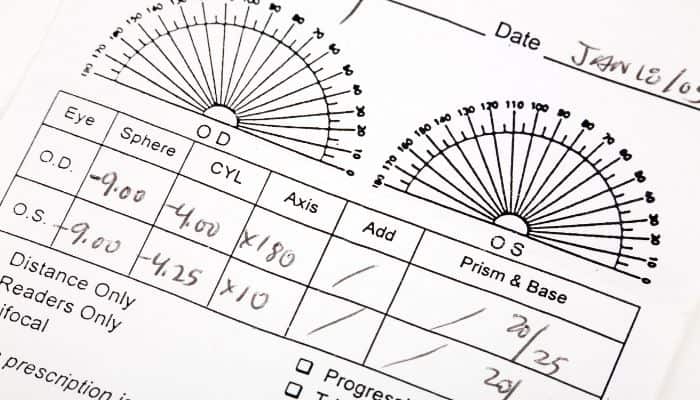
Your eyeglass prescription is a set of numbers that represent the amount of correction needed for your specific vision problems. The prescription is written in a specific format that includes the following terms:
Sphere (SPH): This number measures the amount of nearsightedness (-) or farsightedness (+) you have. The higher the number, the stronger the correction needed.
Cylinder (CYL): This number measures the amount of astigmatism you have. Astigmatism is a condition where the cornea is not perfectly round, causing distorted vision. A higher number means more correction is needed.
Axis: This number indicates the direction of the astigmatism.
Addition (ADD): This number is used for multifocal lenses, such as bifocals or progressive lenses, and measures the additional correction needed for reading.
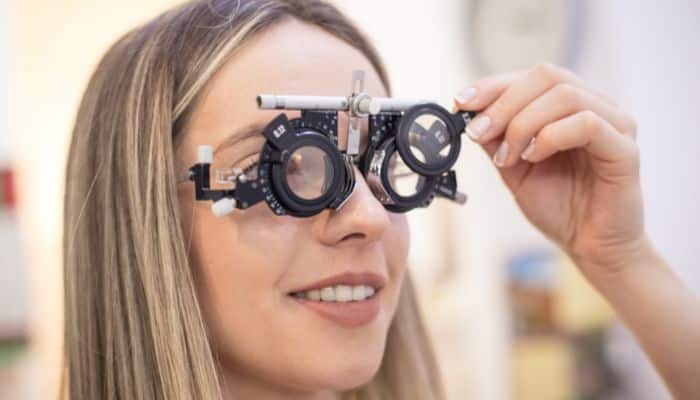
A prescription with a high SPH number (generally + or -6.00 and above) indicates severe nearsightedness or farsightedness, while a high CYL number indicates significant astigmatism.
It’s also not unusual for each eye to have different correction values.
For example, your right eye might have an SPH value of -2.50 diopters while your left eye needs -3.25 diopters.
How Do I Know Which Eye is Which?
Many glasses prescriptions are nowadays labeled with “L” and “R” so it’s obvious which value is for which eye.
If not, your right eye may be abbreviated as “OD,” which stands for “oculus dexter,” and your left eye is abbreviated as “OS,” which stands for “oculus sinister.”
So How Bad Is My Eye Prescription?

The severity of your prescription depends on the degree of refractive error or vision problem. According to the American Academy of Ophthalmology, myopia or nearsightedness can be categorized as mild, moderate, or severe per the following guidelines:
Mild nearsightedness: -3.00 diopters or less
Moderate nearsightedness: -3.00 to -6.00 diopters
Severe nearsightedness: more than -6.00 diopters
Likewise, the guidelines for hyperopia or farsightedness are as follows:
Mild farsightedness: +2.00 diopters or less.
Moderate farsightedness: +2.25 to +5.00 diopters
Severe farsightedness: +5.25 diopters or more
If you have a high myopia or hyperopia prescription, it’s important to be aware of the increased risk of eye problems such as retinal detachment, glaucoma, and cataracts.
Regular eye exams can help detect any potential issues early and prevent further damage to your vision.
What’s a Diopter?
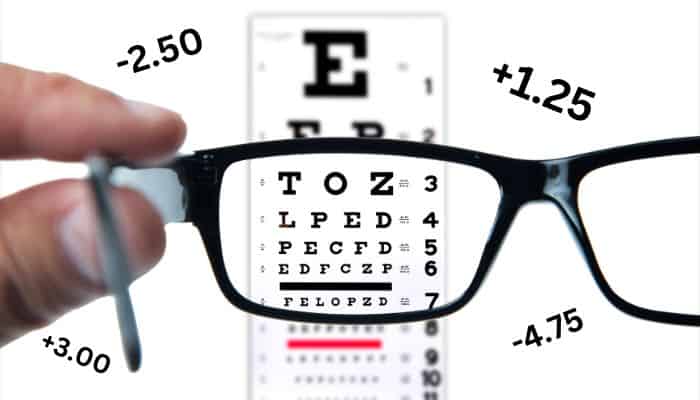
A diopter is a unit of measurement used to describe the strength or power of your eyeglass prescription.
A higher number (either positive or negative) means you need more correction in your glasses or contacts to see clearly.
For example, if your prescription is -2.00 diopters, that means you have moderate nearsightedness and need correction to see objects at a distance.
Conversely, if your prescription is +2.00 diopters, that means you have moderate farsightedness and need correction to see objects up close.
I Have Both an Eyeglasses and a Contact Lens Prescription. Why Aren’t They The Same?

It’s not uncommon for your eyeglass prescription to be different from your contact lens prescription, even if they were both issued by the same eye doctor.
This is because the two types of corrective lenses sit at different distances from your eyes and require slightly different measurements.
When you wear eyeglasses, the lenses sit about 12 millimeters away from your eyes. This distance affects how light is bent, or refracted, as it enters your eyes, so your prescription is adjusted accordingly.
However, when you wear contact lenses, they sit directly on your cornea. This means that the prescription must be adjusted to account for the difference in distance.
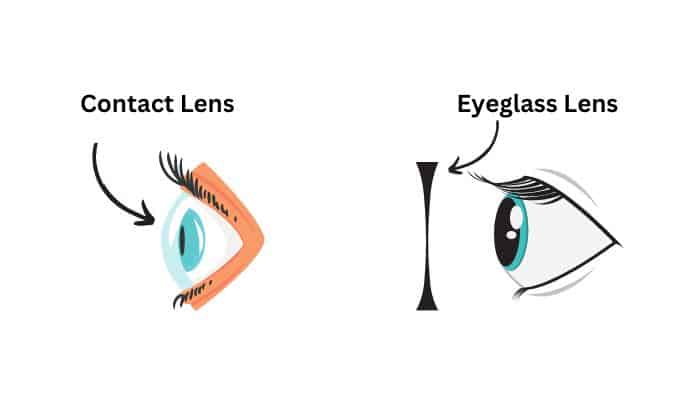
Another reason why your eyeglass and contact lens prescriptions may differ is that contact lenses come in different sizes and materials.
For example, a soft contact lens may have a different curvature or base curve than a hard or rigid gas permeable lens, which can affect the prescription.
Additionally, the type of contact lens you wear can also affect your prescription. Toric lenses for astigmatism or multifocal lenses for presbyopia may require different measurements.
How to Improve Your Vision
While corrective lenses can help improve your vision, there are other steps you can take to maintain healthy eyes and potentially reduce the need for strong corrective eyewear.
Here are some tips for maintaining healthy eyes, different treatment options for vision problems, and lifestyle changes to improve your vision:
Tips for Maintaining Healthy Eyes
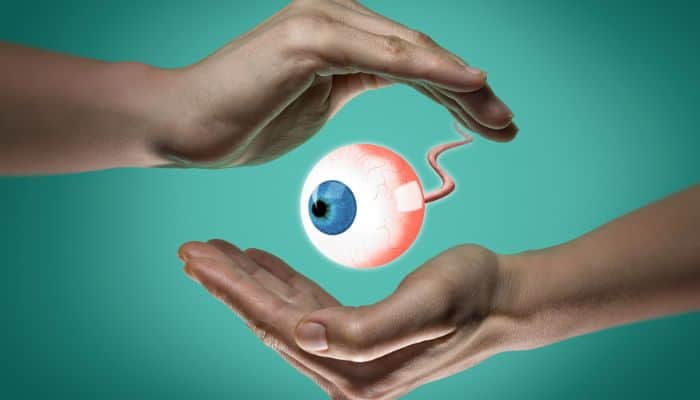
Get regular eye exams: Even if you don’t wear glasses or contacts, it’s important to get regular eye exams to ensure that your eyes are healthy and to catch any potential issues early.
Protect your eyes from the sun: UV rays can damage your eyes. Wear sunglasses or a hat when you’re outside during the day.
Take breaks when using digital devices: Staring at a computer or phone screen for too long can cause eye strain and other problems. Take frequent breaks (via the 20-20-20 rule) and adjust your screen brightness and position to reduce glare.
Eat a healthy diet: A diet rich in fruits, vegetables, and omega-3 fatty acids can help support eye health.
Different Treatment Options for Vision Problems
Corrective lenses: Eyeglasses and contacts can help correct refractive errors like nearsightedness, farsightedness, and astigmatism.
LASIK or other refractive surgeries: These procedures use lasers to reshape the cornea and correct refractive errors.
Vision therapy: This type of therapy uses exercises and other techniques to improve eye coordination and visual processing.
Lifestyle Changes to Improve Vision
Exercise regularly: Regular physical activity can improve blood flow to the eyes and support eye health.
Quit smoking: Smoking can increase the risk of eye diseases like cataracts and macular degeneration.
Practice good hygiene: Wash your hands frequently to reduce the risk of eye infections.